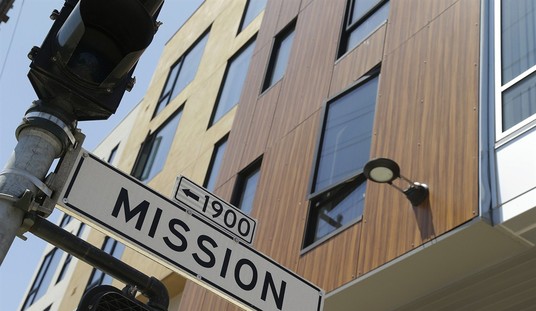One of the more touching scenes in the aftermath of the horrific killing of four Dallas police officers and a DART police officer is what happened Sunday during another Black Lives Matter protest in North Texas. Protesters, counter-protesters, and police all faced off for about an hour before police got the leaders together to talk. After that…everyone seemed to come together. Via The Dallas Morning News (emphasis mine):
“We are not against each other, we are all on the same page,” [Black Lives Matter organizer Britny] Morrison said. “Black Lives Matter does not mean all lives don’t matter. It just means that black lives are being taken at an alarming rate.”
Morrison’s boyfriend, Samuel Barnes, shared a similar message. “Lives matter. Just lives matter,” he said. “Not black lives or all lives – lives matter. We are all Americans. We are all children of God.”
Joseph Offut, a counterprotester wearing a shirt that said “Red White Blue,” said what happened Thursday was “unrelated to the cause.”
“Today we mark history, today we’re going to show the rest of the country how we came together,” he said…
Tearing up, Ty Hardaway who runs a party bus company that took some protesters from NorthPark to the intersection, said this is how walls get torn down.
“We need that dialog so we can get understanding,” he said. “The police need to explain to us their mentality, then, whether we like it or not or disagree, we need to be receptive to listen. Then they need to listen to our side.”
Hardaway also talked about a “set of guidelines” so both sides could be held accountable. The full video can be seen here, but probably one of the coolest images from Sunday’s accord is the BLM protesters hugging a guy wearing a Confederate flag shirt. It’s a pretty dramatic turn of events because earlier DMN noted the BLM protesters didn’t think the counter-protesters were really interested in a dialogue (even though one of the counter-protest leaders was an African-American). The feeling is probably mutual with counter-protesters (and given how BLM protests in Memphis and Baton Rouge have gone, who can blame them).
But this meeting of the minds isn’t really being talked about across the country. More outlets seem to be focused on the image of the woman about to be arrested by Baton Rouge police officers, or the Memphis protesters climbing atop vehicles on a bridge. This shouldn’t be surprising because bad news, with jarring pictures, tends to sell better than everyone hugging and singing Kumbaya. Bad news gets more reaction because it sheds light on the ills of this world, whether it’s heavily-armored police taking people into custody or officers getting seriously injured by rocks. The goal may be to convince people to actually start working together if they see the outcome of rage left unchecked or injustice. The other side of the coin is bad news can do the exact opposite, and encourage more bad behavior to get on TV.
It could also be what happened in Dallas is just an outlier and people care more about being involved in chaos instead of solving problems. But if that’s the case, shouldn’t the Dallas image and video be circulated more? Shouldn’t media outlets be rushing to put Joseph Offut, Samuel Barnes, and Ty Hardaway on TV to discuss why they came together to say, “No, we’re not going to argue, we’re going to talk with each other”? That might actually heal more wounds or at least convince more protesters and police officers to sit down and talk.
The key, though, is making sure both sides want to have a discussion. Free Radical Network and Houston Tea Party co-founder Felicia Cravens had high praise for how Houston police handled their demonstrations because officers did a good job of keeping everyone safe and making sure voices were heard. She also praised police for how tolerant they were during the Occupy Houston protests, saying things were handled pretty gently. It could be a cultural thing because Texans do tend to have respect for officers, while people in other states may not. People in Chicago, Baltimore, and Ferguson have long held antipathy for police, and no one can really blame them because of the reports of racial disparity and police brutality. There are also questions about whether or not police are using appropriate force or whether officers should use a softer hand before reaching for a gun. It’s also legitimate to ask whether police should stop considering everyone a suspect, and treat everyone the same way.
At the same time, it’s not smart to bait officers by throwing rocks at them before throwing up your hands in the “don’t shoot” posture like Ferguson protesters did. That’s just asking for trouble. Getting atop of cars and blocking freeways is a horrible idea, which only leads to more tension between police and protesters. The path to police reform is a two-way street, and protesters are going to have to be willing to engage as much as police are. Dallas police learned this which is why protesters, counter-protesters, and police officers all ended up hugging and praying for each other. It would just be nice if more people were talking about this, instead of the violence.









Join the conversation as a VIP Member